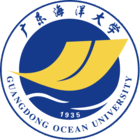详细信息
Genome survey of Misgurnus anguillicaudatus to identify genomic information, simple sequence repeat (SSR) markers, and mitochondrial genome ( SCI-EXPANDED收录) 被引量:13
文献类型:期刊文献
英文题名:Genome survey of Misgurnus anguillicaudatus to identify genomic information, simple sequence repeat (SSR) markers, and mitochondrial genome
作者:Huang, Guiyun[1,2];Cao, Jianmeng[2];Chen, Chen[3];Wang, Miao[2];Liu, Zhigang[2];Gao, Fengying[2];Yi, Mengmeng[2];Chen, Gang[1];Lu, Maixin[2]
机构:[1]Guangdong Ocean Univ, Coll Fisheries, Zhanjiang 524025, Peoples R China;[2]CAFS, Key Lab Trop & Subtrop Fishery Resource Applicat, Minist Agr & Rural Affairs,Pearl River Fisheries, Key Lab Aquat Anim Immune Technol Guangdong Prov, Xingyu Rd 1, Guangzhou 510380, Peoples R China;[3]CAFS, Key Lab Trop & Subtrop Fishery Resource Applicat, Minist Agr & Rural Affairs, Aquat Germplasm Resources & Genet Breeding Lib,Pe, Xingyu Rd 1, Guangzhou 510380, Peoples R China
年份:2022
卷号:49
期号:3
起止页码:2185
外文期刊名:MOLECULAR BIOLOGY REPORTS
收录:SCI-EXPANDED(收录号:WOS:000745385200008)、、Scopus(收录号:2-s2.0-85123279416)、WOS
基金:This study was supported by China Agriculture Research System of MOF and MARA (CARS-46) and the National Key R&D Program of China (No. 2018YFD0901201).
语种:英文
外文关键词:Misgurnus anguillicaudatus; Genome characteristics; Microsatellite motifs; Mitochondrial genome; Microsatellite markers
外文摘要:Background The dojo loach Misgurnus anguillicaudatus is an important economic species in Asia because of its nutritional value and broad environmental adaptability. Despite its economic importance, genomic data for M. anguillicaudatus is currently unavailable. Methods and results In the present study, we conducted a genome survey of M. anguillicaudatus using next-generation sequencing technology. Its genome size was estimated to be 1105.97 Mb by using K-mer analysis, and its heterozygosity ratio, repeat sequence content, GC content were 1.45%, 58.98%, and 38.03%, respectively. A total of 376,357 microsatellite motifs were identified, and mononucleotides, with a frequency of 42.57%, were the most frequently repeated motifs, followed by 40.83% dinucleotide, 7.49% trinucleotide, 8.09% tetranucleotide, and 0.91% pentanucleotide motifs. The AC/GT, AAT/ATT, and ACAG/CTGT repeats were the most abundant motifs among dinucleotide, trinucleotide, and tetranucleotide motifs, respectively. Besides, the complete mitochondrial genome was sequenced. Based on the Maximum Likelihood and Bayesian inference analyses, M. anguillicaudatus yingde in this study was the "introgressed" mitochondrial type. Seventy microsatellite loci were randomly selected from detected SSR loci to test polymorphic, of which, 20 microsatellite loci were assessed in 30 individuals from a wild population. The number of alleles (Na), observed heterozygosity (Ho), and expected heterozygosity (He) per locus ranged from 7 to 19, 0.400 to 0.933, and 0.752 to 0.938, respectively. All 20 loci were highly informative (PIC > 0.700). Eight loci deviated from Hardy-Weinberg equilibrium after Bonferroni correction (P < 0.05). Conclusions This is the first report of genome survey sequencing in M. anguillicaudatus, genome information, mitochondrial genome, and microsatellite markers will be valuable for further studies on population genetic analysis, natural resource conservation, and molecular marker-assisted selective breeding.
参考文献:
![]() 正在载入数据...
正在载入数据...


